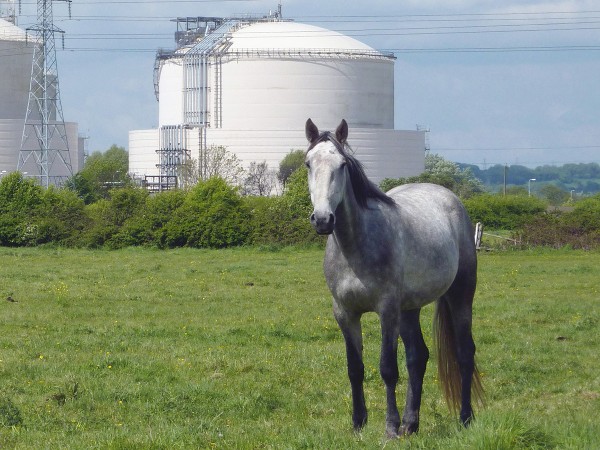 The news in many European countries has been dominated in February by the ‘horse meat scandal’. Small traces of horse meat may be the result of faulty quality control. But the significant amount of horse found in several processed meat products suggest fraud at one or more points in the supply chain from farm to supermarket or other outlet. Indeed several specific suppliers, from abattoirs to processors are facing criminal investigation.
The news in many European countries has been dominated in February by the ‘horse meat scandal’. Small traces of horse meat may be the result of faulty quality control. But the significant amount of horse found in several processed meat products suggest fraud at one or more points in the supply chain from farm to supermarket or other outlet. Indeed several specific suppliers, from abattoirs to processors are facing criminal investigation.
The scandal has put the supply chain under intense scrutiny. Part of the problem is that the supply chain is often very long and complex. As the Guardian article states:
The food and retail industries have become highly concentrated and globalised in recent decades. A handful of key players dominate the beef processing and supermarket sectors across Europe. They have developed very long supply chains, particularly for their economy lines, which enable them to buy the ingredients for processed foods from wherever they are cheapest at any point, depending on exchange rates and prices on the global commodity markets. Networks of brokers, cold stores operators and subcontracted meat cutting plants have emerged to supply rapidly fluctuating orders “just in time”. Management consultants KPMG estimate there are around 450 points at which the integrity of the chain can break down.
Then there is the huge pressure on all parts of the supply chain to reduce costs.
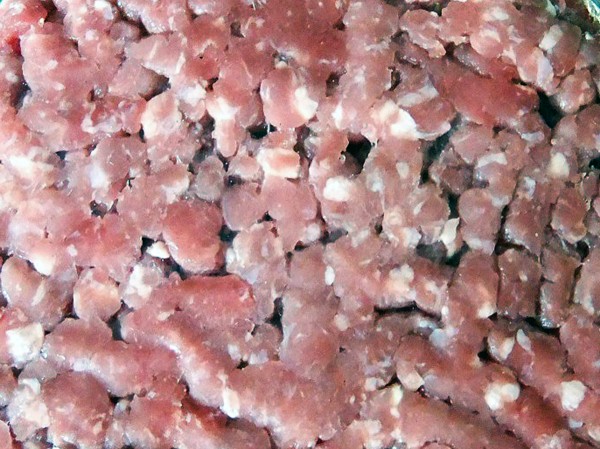 Supermarkets use their market power to drive down the prices of the products they buy from their suppliers and this has a knock-on effect backwards down the supply chain. This pressure has intensified as real wages have fallen and consumers have found their budgets squeezed.
Supermarkets use their market power to drive down the prices of the products they buy from their suppliers and this has a knock-on effect backwards down the supply chain. This pressure has intensified as real wages have fallen and consumers have found their budgets squeezed.
At the same time, beef and other meat prices have been rising as the costs of animal feed have soared. This all puts tremendous pressure on suppliers to add cheaper ingredients. Again to quote the Guardian article:
Manufacturers add other cheap ingredients including water and fat, and use concentrated proteins to bind the water and fat in. They may appear on labels as ‘seasoning’. One of the cheapest sources of these protein additives is pork rind. It is possible that horse hide is now also being used. The widespread adulteration of cheap chicken breast with pig and beef proteins and water has been uncovered in previous scandals. The beef proteins were derived from hydrolysed cattle hides. It is not illegal to use these protein concentrates so long as they are identified correctly to the manufacturer.
It is not surprising that if cheap horse meat becomes available to suppliers, such as from old horses towards the end of their working lives, some processing companies may be tempted to add it fraudulently, stating that it is beef.
The articles look at the issues of long and complex supply chains in the processed food industry and assess why they have evolved into their current form and the difficulties in regulating them.
Horsegate: heed economics of the cold chain The Grocer, Andrew Godley (16/2/13)
Horsemeat scandal: the essential guide The Guardian, Felicity Lawrence (15/2/13)
After the horse has been bolted The Economist (16/2/13)
Slavery, not horse meat, is the real scandal on our doorstep The Telegraph, Fraser Nelson (14/2/13)
Industry must take the reins on food safety Globe and Mail (Canada)Sylvain Charlebois (15/2/13)
Supply chains changed the growth model The Economist, Richard Baldwin (15/8/12)
Supply-chain management The Economist (6/4/09)
Tesco pledges to open up supply chain after horse meat scandal The Telegraph (16/2/13)
Horse meat scandal: Shoppers who buy ‘cheapest food’ at risk The Telegraph, James Quinn, Jason Lewis and Patrick Sawer (16/2/13)
Let Them Eat Horse Bloomberg, Marc Champion (15/2/13)
Scandal shows meat supply chain must be policed heraldscotland (14/2/13)
MPs push for new powers for FSA as officials seize yet more suspect meat Independent, Martin Hickman (13/2/13)
Questions
- Why do supermarkets and their suppliers use long supply chains?
- Explain the concepts of ‘countervailing power’ and ‘monopsony or oligopsony power’? How do they apply in the processed meat supply chain?
- Identify the types of transactions costs in the processed meat industry.
- In what ways do consumers (a) gain and (b) lose from such supply chains?
- Why is the problem of fraud in processed food supply chains likely to have intensified in recent years?
- How have supermarkets reacted to the horse meat scandal? Why has it taken the scandal to make them react in this way?
- To what extent is the problem simply one of inaccurate labelling?
- To what extent is there a principal–agent problem in the processed meat supply chain?
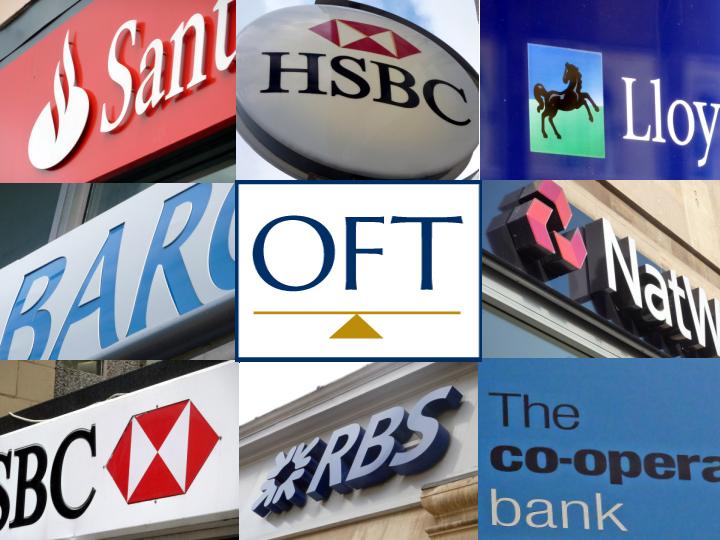 Over the past five years the Office of Fair Trading (OFT) has been closely studying the market for personal bank accounts in the UK. Last week, it announced its latest findings and the evidence seems to suggest that there remains a lack of competition in the market.
Over the past five years the Office of Fair Trading (OFT) has been closely studying the market for personal bank accounts in the UK. Last week, it announced its latest findings and the evidence seems to suggest that there remains a lack of competition in the market.
On the positive side, it reports that there has been a large fall in unarranged overdraft fees. However, despite this, according to the OFT banks still make on average £139 per year from every active current account. Furthermore, concentration has increased with the four largest banks (Barclays, Lloyds, HSBC and RBS) now accounting for 85% of the market and there has been little new entry. It appears that one of the key factors in enabling these main players to dominate the market and reap high profits is a lack of consumer switching behaviour. According to the OFT chief executive, Clive Maxwell:
Customers still find it difficult to assess which account offers the best deal and lack confidence that they can switch accounts easily. This prevents them from driving effective competition between providers.
Despite all these concerns, the OFT declined to refer the market to the Competition Commission for a more in-depth investigation and potential remedial action. Instead, the OFT will look at the market again in 2015. Richard Lloyd, the executive director at the consumer organisation Which?, was disappointed with this decision and was quoted in the The Guardian as saying:
Everyone – consumers, the government, leading bankers and now the OFT – seems to agree that big change is needed in banking, and that much greater competition on the high street is urgently needed to make the banks work for customers, not bankers.
Whilst at least for the moment, the Competition Commission will not get the chance to take action, there are still several reforms underway that may affect competition in the market. First, the OFT is increasing pressure on banks to allow consumers to have portable account numbers that they can take with them if they switch provider. Second, as a result of the Independent Commission’s review, banks will be required to switch a customer’s account in one week, rather than the average of 18 days it currently takes, and this process will become much more seamless. Finally, Lloyds has agreed to sell over 600 branches to the Co-op in order to meet the European Commission’s requirements following the government bail-out of the bank in 2008. This will increase the Co-op’s share of the current account market to 7%. It will be interesting to see how these reforms affect the market. If there is not substantial evidence of increased competition then the market is likely to face more scrutiny from the competition authorities.
Bank accounts: OFT says significant change needed BBC (25/01/13)
OFT: banks failing consumers The Economic Voice (25/01/13)
Let’s make bank accounts as easy to switch as mobiles The Telegraph, Andrew Oxlade (28/01/13)
OFT chief calls for more competitive banking sector The Telegraph, Denise Roland (30/01/13)
Questions
- What type of market structure best fits the banking industry?
- What are the barriers to entry in this market?
- What are the key features of the market that reduce consumer switching behaviour?
- Do you think most people are more likely to switch their mobile phone or current account provider? Explain.
- Why does limited consumer switching reduce the intensity of competition?
- Do you think the current reforms will result in a substantial increase in competition?
 Six of the major tea producing countries – India, Kenya, Sri Lanka, Indonesia, Rwanda and Malawi – have formed an International Tea Producers’ Forum (ITPF). Together these countries produce slightly more than the world’s tea. The hope of the members of the new ITPF is that their cartel will allow them to increase the price of tea to the growers and to create greater price stability.
Six of the major tea producing countries – India, Kenya, Sri Lanka, Indonesia, Rwanda and Malawi – have formed an International Tea Producers’ Forum (ITPF). Together these countries produce slightly more than the world’s tea. The hope of the members of the new ITPF is that their cartel will allow them to increase the price of tea to the growers and to create greater price stability.
According to the Assam Tribune article below:
ITPF’s main objectives include – safeguarding the interests of the tea-producing countries, evolving collective solutions for the problems facing the producers, providing technical cooperation, sharing of technology and expertise by the member countries, undertaking market studies and research projects to address any specific issues concerning tea in general or any variety of tea, among others.
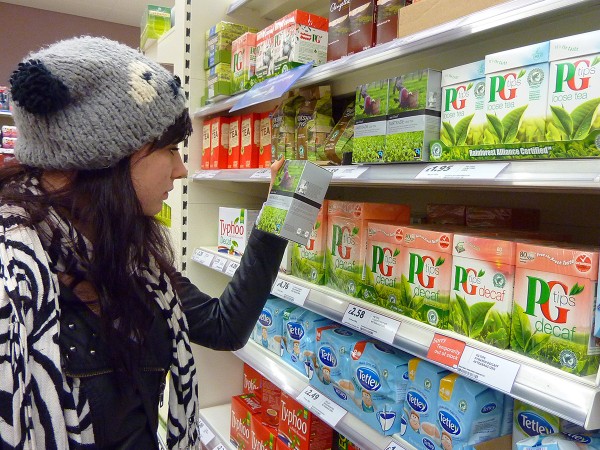 And according to the article from Sri Lanka’s Daily News:
And according to the article from Sri Lanka’s Daily News:
Chairman of the Planters’ Association of Ceylon, which represents the interests of 23 Regional Plantation Companies, Lalith Obeyesekere said this was a landmark occasion. Sri Lanka particularly looks to the forum to provide long-term sustainability to the tea industry in maintaining price stability and quality standards, among the other objectives set out in the mandate… The Planters’ Association said they were confident that Sri Lanka could use the ITPF to re-look at the industry in order that local tea producers realize their full potential.
Sri Lanka’s plantation industries minister Mahinda Samarasinghe said:
The bulk of production is in the hands of smallholders. So there’s a need to increase their incomes. Price stability is definitely important.
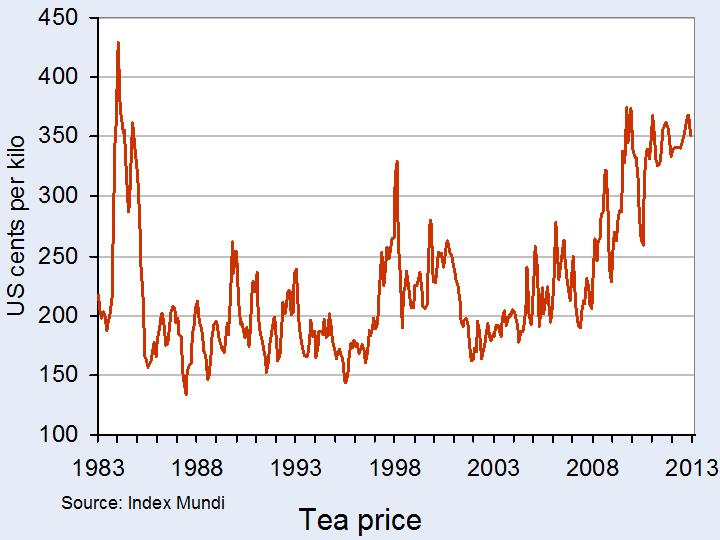 The main aim of the ITPF over the longer term is likely to be to raise tea prices. The chart shows international tea prices from 1983 to the present day. As you can see, they have fluctuated considerably. Note that these are prices in nominal terms and hence do not take inflation into account. Click here for a PowerPoint of the chart.
The main aim of the ITPF over the longer term is likely to be to raise tea prices. The chart shows international tea prices from 1983 to the present day. As you can see, they have fluctuated considerably. Note that these are prices in nominal terms and hence do not take inflation into account. Click here for a PowerPoint of the chart.
But if the main aim is to increase prices to tea growers, how could this be achieved? One objective of the ITPF is to stimulate demand for tea by ‘promoting tea consumption through generic promotional campaigns’. The aim would be to encourage people to switch from coffee and soft drinks.
 But to take advantage of its market power, the cartel might also want to reduce tea production, thereby pushing up the price. This, of course, would be more feasible if it had a larger than 50% share of the market.
But to take advantage of its market power, the cartel might also want to reduce tea production, thereby pushing up the price. This, of course, would be more feasible if it had a larger than 50% share of the market.
Although production quotas are not currently part of the agreement, these are likely to be considered at future meetings, especially if the three other large producers – China, Vietnam and Iran – can be persuaded to join.
China, with some 38% of the market, is the world’s largest tea producer. Although it sent an observer to the meeting (as did Iran), it was not one of the signatories. If it could be persuaded to join the cartel, this would increase its power. Nevertheless, China specialises in different types of tea, mainly green teas, and is not the world’s biggest exporter – that is Kenya.
Articles
Tea nations join forces Radio New Zealand (25/1/13)
International Tea Producers’ Forum formed Assam Tribune, Ajit Patowary (23/1/13)
Planters’ Association upbeat on newly formed International Tea Producer’s Forum Daily News (Sri Lanka) (26/1/13)
Leaf Lobby: Sri Lanka hosts tea producer forum Lanka Business Online (24/1/13)
‘Tea cartel’ formed by biggest producing nation BBC News (23/1/13)
Tea producers brew up plan to raise prices Emirates 24/7 (23/1/13)
Data
Tea Monthly Price – US cents per Kilogram Index Mundi
Questions
- What are the stated aims of the newly formed ITPF? How realistic are they?
- What conditions are necessary for a cartel to be successful in raising prices over the long term?
- With reference to the chart, what can you say about the real price of tea over the period 1983 to 2013?
- To what extent are these conditions met by the ITPF?
- Why may a rise in tea prices in the supermarkets not result in a rise in prices to tea growers?
- How may tea growers benefit from the ITPF even if the Forum does not result directly in a rise in prices to growers?
- How can game theory help to explain the possible behaviour of members of a cartel and producers outside the cartel?
 Comet, Peacocks, Woolworths, JJB, Jessops and now HMV – they all have one thing in common. The recession has hit them so hard that they entered administration. HMV is the latest high street retailer to bring in the administrators, despite insisting that it does have a future on the UK’s high streets. With debts of £176m and huge competition from online retailers, the future of HMV is very uncertain.
Comet, Peacocks, Woolworths, JJB, Jessops and now HMV – they all have one thing in common. The recession has hit them so hard that they entered administration. HMV is the latest high street retailer to bring in the administrators, despite insisting that it does have a future on the UK’s high streets. With debts of £176m and huge competition from online retailers, the future of HMV is very uncertain.
Over the past decades, companies such as Amazon, ebay, LoveFilm, Netflix and apple have emerged providing very stiff competition to the last remaining high street seller of music and DVDs. People have been turning more and more to the internet to do their shopping, with cheaper prices and greater choice. The speed of delivery, which in the past may have been a disadvantage of buying from somewhere like Amazon, is now barely an obstacle and these substitute companies have created a difficult environment for high street retailers to compete in. Despite going into administration, it’s not necessarily the end of the much-loved HMV. Its Chief Executive said:
We remain convinced we can find a successful business outcomes. We want to make sure it remains on the high street … We know our customers fell the same way.
 While the recession has undoubtedly affected sales at HMV, is this the main reason for its demise or are other factors more relevant? As discussed, online retailers have taken over the DVD and music industry and with downloading increasing in popularity and CD/DVDs on sale in numerous locations, including supermarket chains, HMV has felt the competitive pressure and its place on the high street has come into question. As Neil Saunders, the Managing Director of Conlumino said:
While the recession has undoubtedly affected sales at HMV, is this the main reason for its demise or are other factors more relevant? As discussed, online retailers have taken over the DVD and music industry and with downloading increasing in popularity and CD/DVDs on sale in numerous locations, including supermarket chains, HMV has felt the competitive pressure and its place on the high street has come into question. As Neil Saunders, the Managing Director of Conlumino said:
By our own figures, we forecast that by the end of 2015 some 90.4 per cent of music and film sales will be online. The bottom line is that there is no real future for physical retail in the music sector.
Further to this, prices have been forced downwards and HMV, having to pay high fixed costs to retain their place on the high streets, have been unable to compete and remain profitable. Another contributing factor could be an outdated management structure, which has not responded to the changing times. Whatever the cause, thousands of jobs have been put at risk. Even if buyers are found, some store closures by the administrators, Deloitte, seem inevitable. Customer gift vouchers have already become worthless and further losses to both workers and customers seem likely. It is thought that there will be many interested buyers and huge support from suppliers, but the former is likely to remain a relatively secretive area for some time.

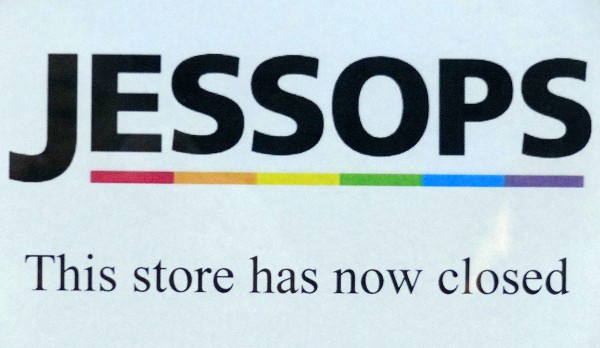 This latest high street disaster will undoubtedly raise many questions. One theory about recovery from a recession looks at the need for many businesses to go under until the fittest are left and there is sufficient scope for new businesses to emerge.
This latest high street disaster will undoubtedly raise many questions. One theory about recovery from a recession looks at the need for many businesses to go under until the fittest are left and there is sufficient scope for new businesses to emerge.
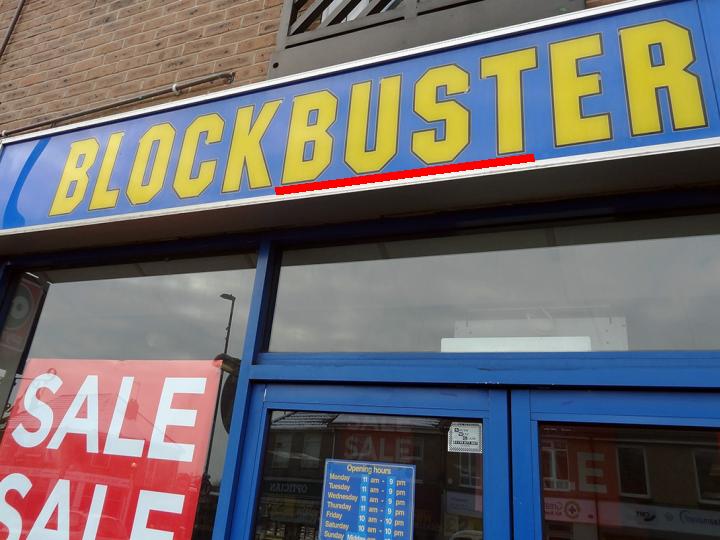 Could it be that the collapse of companies such as Woolworths, HMV, Comet, Jessops and Blockbuster is an essential requirement for economic recovery? Or was the recession irrelevant for HMV? Was its collapse an inevitable consequence of the changing face of Britain’s high streets and if so, what does the future hold for the high street retailers? The following articles consider the demise of HMV.
Could it be that the collapse of companies such as Woolworths, HMV, Comet, Jessops and Blockbuster is an essential requirement for economic recovery? Or was the recession irrelevant for HMV? Was its collapse an inevitable consequence of the changing face of Britain’s high streets and if so, what does the future hold for the high street retailers? The following articles consider the demise of HMV.
HMV: a visual history BBC News (15/1/13)
Chief executive says ‘HMV still has a place on the high street’, as customers are told their gift vouchers are worthless Independent, James Thompson (15/1/13)
Potential buyers circle stricken HMV Financial Times, Andrea Felsted (15/1/13)
HMV and independents to urged to work together to save in-store music market BBC News, Clive Lindsay (15/1/13)
HMV record chain was besest by digital downloads and cheap DVDs The Guardian (15/1/13)
The death of traditional retailers like HMV started when we caught on to one-click and the joy of owning DVDs wore thin Independent, Grace Dent (15/1/13)
HMV shoppers: ‘I’m disappointed, but it’s understandable why they went bust The Guardian, James Brilliant (15/1/13)
HMV: Record labels could take HMV back to its 1920 roots The Telegraph, Graham Ruddick (15/1/13)
HMV’s future seen as handful of stores and website Reuters, Neil Maidment and James Davey (15/1/13)
HMV leaves social gap in high street BBC News, Robert Plummer (15/1/13)
Is there good news in HMV’s collapse? BBC News, Robert Peston (15/1/13)
Is it game over for UK retail? The Guardian, Larry Elliott (18/1/13)
High Street retailers: Who has been hit hardest? BBC News (16/1/13)
Questions
- What are the main reasons behind the collapse of HMV?
- Use a diagram to illustrate the impact the companies such as Amazon and Tesco have had on costs and prices in the entertainment industry.
- Has the value we place on owning DVDs truly changed or have other factors led to larger purchases of online entertainment?
- Why is online retail providing such steep competition to high street retailers?
- Explain why it can be argued that economic recovery will only take place after a certain number of businesses have gone into administration.
- To what extent do you think HMV’s collapse is due to its failure to adapt to changing social circumstances?
- Briefly outline the wider economic implications of the collapse of a company such as HMV. Think about managers, employees, suppliers, customers and other competitors, as well as other high street retailers.
- In which market structure would you place the entertainment industry? Explain your answer. Has this contributed to the demise of HMV?
 Last week, the European Commission imposed a record fine of almost €1.5b on a group of firms found to have been involved in price fixing. Between 1996 and 2006 these firms fixed world-wide prices of cathode ray tubes which are used to make TV screens and computer monitors.
Last week, the European Commission imposed a record fine of almost €1.5b on a group of firms found to have been involved in price fixing. Between 1996 and 2006 these firms fixed world-wide prices of cathode ray tubes which are used to make TV screens and computer monitors.
The firms involved in fixing the prices in one or both of these markets included household names such as Samsung, Panasonic, Toshiba and Philips. As these tubes accounted for over half the price of a screen this clearly had a significant knock-on effect on the amount final consumers paid. The European competition agency only discovered the cartel when it was informed that it had been in operation by Chunghwa, a Taiwanese company that had also been involved. Therefore, under the Commission’s leniency policy Chunghwa was granted full immunity from the fines.
The cartel members held frequent meetings in cities across Europe and Asia. The top level meetings were known as ‘green meetings’ as they were often followed by a round of golf. Interestingly, this is not the first time the game of golf has featured in an international cartel. In the famous lysine cartel an informant working for the FBI used the quality of the golf courses to convince the cartel members to meet in Hawaii, where the FBI had the jurisdiction to secretly record the meeting as evidence.
The screen tube cartel is one of the most highly organised cartels the European Commission has ever detected. Different prices were even fixed for individual TV and computer manufacturers. Furthermore, compliance with the cartel agreement was strictly monitored with plant visits to audit how much firms were producing. The cartel was also clearly very aware that it was breaking the law and that information needed to be concealed as some of the documents discovered stated that they should be destroyed after they had been read. One document even said that:
“Everybody is requested to keep it as secret as it would be serious damage if it is open to customers or European Commission.”
Another interesting feature of the cartel is that it occurred at a time when the technology was being replaced by LCD and plasma screens. Therefore, the cartel appears to have been partly motivated by a desire to mitigate the negative impact the declining market would have on the firms involved.
According to the Independent newspaper:
“Philips said it would challenge what it called a disproportionate and unjustified penalty. Panasonic and Toshiba are also considering legal challenges. Samsung reserved its comment.
TV makers in record 1.47bn-euro fine BBC News (05/12/12)
TV computer makers fined $1.93 billion for price fixing Corporate Crime Reporter (05/12/12)
European antitrust fines: a new wave of deterrence? EurActiv, Mario Mariniello (11/12/12)
Questions
- What is the impact of a successful cartel on economic welfare?
- Describe the impact declining demand has on firms in a competitive market.
- Why might it have been necessary for the cartel to charge different prices to individual TV and computer manufacturers?
- Why would the cartel need to audit how much members are producing?
- Why do competition authorities offer immunity to firms that inform them about cartel behaviour?
- Based on the evidence in the articles, do you think the firms involved have grounds to appeal the fines imposed?
 The news in many European countries has been dominated in February by the ‘horse meat scandal’. Small traces of horse meat may be the result of faulty quality control. But the significant amount of horse found in several processed meat products suggest fraud at one or more points in the supply chain from farm to supermarket or other outlet. Indeed several specific suppliers, from abattoirs to processors are facing criminal investigation.
The news in many European countries has been dominated in February by the ‘horse meat scandal’. Small traces of horse meat may be the result of faulty quality control. But the significant amount of horse found in several processed meat products suggest fraud at one or more points in the supply chain from farm to supermarket or other outlet. Indeed several specific suppliers, from abattoirs to processors are facing criminal investigation. Supermarkets use their market power to drive down the prices of the products they buy from their suppliers and this has a knock-on effect backwards down the supply chain. This pressure has intensified as real wages have fallen and consumers have found their budgets squeezed.
Supermarkets use their market power to drive down the prices of the products they buy from their suppliers and this has a knock-on effect backwards down the supply chain. This pressure has intensified as real wages have fallen and consumers have found their budgets squeezed.









